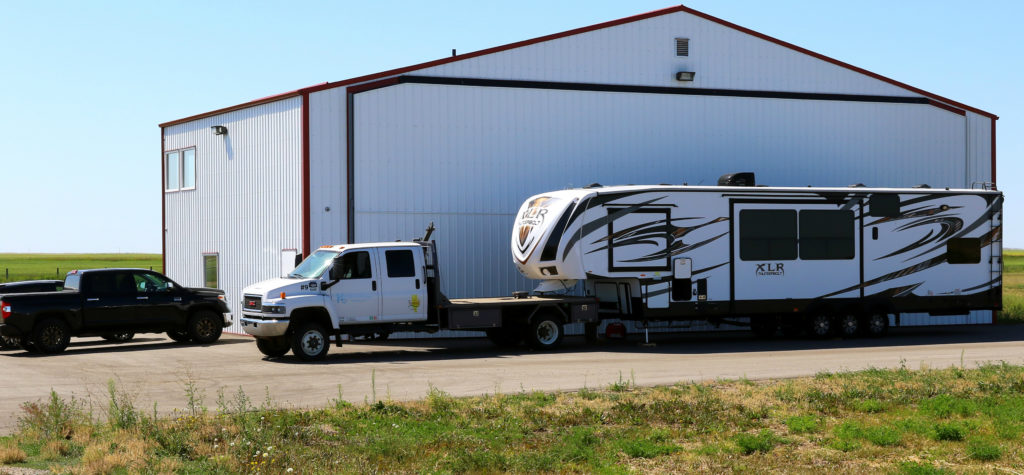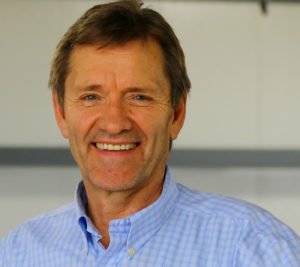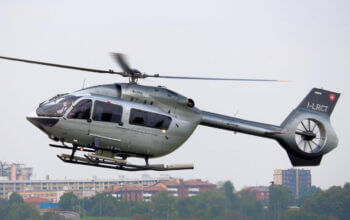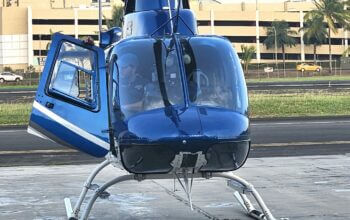Estimated reading time 6 minutes, 30 seconds.
On a vast swath of southern Alberta prairie, near the tiny village of Foremost, unmanned aircraft systems (UAS) have unrivalled freedom to roam.

They can zip, zag and zoom beyond visual line of sight (BVLOS) over more than 2,400 square kilometres of mostly flat terrain, covered with wheat, canola and other crops.
“The large … airspace has a wide variety of terrain features,” said Doug Hanna, manager of the Foremost UAS Range, the first BVLOS testing range for drones in Canada.
“[There are] few power or telephone lines, and is mainly grass lands and farmland,” he added. “There are some pipelines, small lakes, creeks and a low-density population.”
In other words, it’s an ideal proving ground for UAS, which make up one of the fastest-growing parts of Canada’s aviation industry.
The range near Foremost, a village of roughly 500 people about 70 kilometres north of the U.S. border, was established in 2008 and is restricted airspace for UAS, with the freedom to fly up to 18,000 feet (5,400 metres) above sea level.
It was intended to bring new industry to the town, with the goal of ensuring Canada will become the “go-to” destination for civil and commercial UAS applications.

BVLOS flying is critical to many of the planned uses of UAS, an incredibly diverse set of aircraft that weigh as little as one kilogram. At the other end of the spectrum are much larger UAS capable of carrying a 10,000-kilogram payload.
Militaries around the world use UAS for intelligence gathering and tactical operations, and their use to combat terrorism has been well documented. Government agencies also use UAS for a variety of tasks.
That’s only a hint of the possible market for drones, however, with civilian uses expanding into virtually every field, including package delivery.
It’s been speculated UAVs may eventually become a new form of taxi, shuttling passengers around the world’s major cities.
Southern Alberta is an ideal setting for UAS testing, in part because of its favourable weather. Visual flight rules (VFR) conditions are in effect about 90 per cent of the time, year-round.
Conditions that once drew Allied forces to the Canadian Prairies during the Second World War through the British Commonwealth Air Training Plan are now attracting leaders in the future of flight.
The Foremost UAS range is complemented by a base at the Foremost Aerodrome about 1.6 kilometres west of the village, a well-kept facility with a 3,000-foot by 75-foot runway and a generous manoevring apron.
Foremost has two areas of Class ‘F’ (restricted) special use airspace, also known as CYRs–one in the west end of the range and one in the east. A third CYR overlays the other two and extends vertically to 18,000 feet above sea level.
There are no low altitude airways in the vicinity.

In 2014 the Canadian Centre for Unmanned Vehicle Systems (CCUVS), a federally-registered not-for-profit based in Medicine Hat, Alta., received all necessary approvals to manage the restricted airspace near Foremost. The first customers on the range were flying by 2017.
A new hangar at Foremost Aeodrome is dedicated to BVLOS flight. The hangar features a 60-foot-by-16-foot door that will accommodate UAS up to the medium altitude, long endurance (MALE) category.
MALE drones can weigh up to 1,500 kilograms, carry up to 250 kilograms in payload, and have a range of up to 500 kilometres.
A clean workspace, meeting room and office are located at the rear of the hangar, with a mezzanine floor featuring large windows overlooking the surrounding terrain.
The mezzanine will be the control tower and operations centre once it is equipped. To improve situational awareness on the test-range, several ground-based systems are planned.
“We are going to install Automatic Dependent Surveillance–Broadcast (ADS-B) receivers and display monitors on the mezzanine,” said Hanna.
“The test UAVs will be equipped with ADS-B transmitters as part of their avionics and will be tracked with this technology, as will any aircraft with similar equipment entering our airspace. I am also looking at sourcing a ground radar to track the UAVs and any non-ADS-B aircraft.
Hanna has an extensive background as a research scientist for 30 years at the Defence Research and Development Canada (DRDC) research centre at Canadian Forces Base Suffield, near Medicine Hat. He spent 22 of those years as program manager for DRDC’s UAV studies.
Start-up funding for the UAS test range has come from provincial and federal government agencies. Alberta Economic Development and Trade and Western Economic Diversification Canada have been the principal sources of funding for initial development of the restricted airspace and the present creation of a test hangar and infrastructure.
The Town of Foremost and the Palliser Economic Partnership are big supporters of the project, hoping to increase local business opportunities and provide a source of employment for their citizens.
“Our plan is to become self-sufficient by marketing our services to both the original equipment manufacturers, where we will be able to test and verify their products, and to UAV operators, validating their ability to carry out BVLOS flights,” said Hanna.
The range appears to be on the cusp of leading the rapidly increasing number of UAS companies seeking BVLOS capability and certification in a myriad of different applications.








